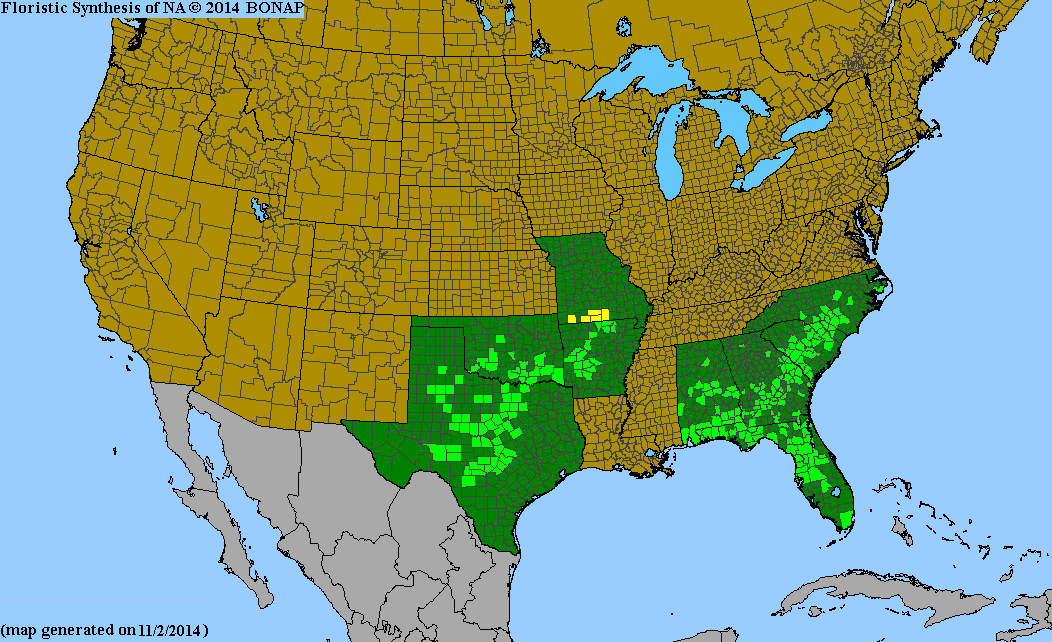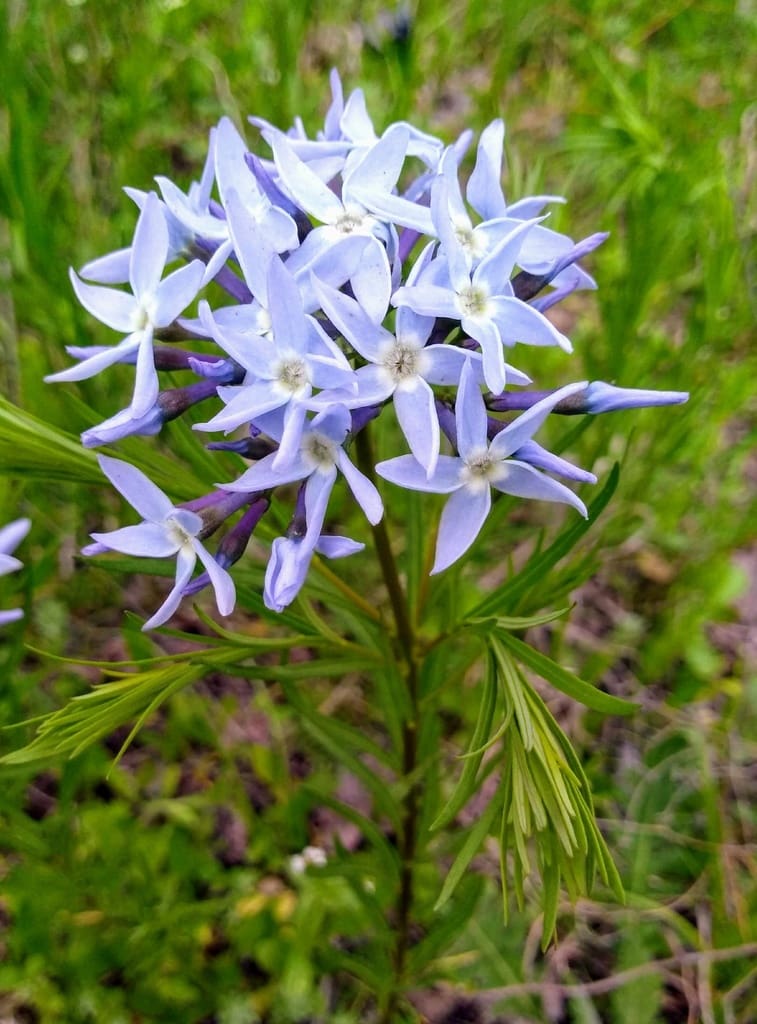Apocynaceae
fringed bluestar
Amsonia ciliata
Other Common Names
sandhills bluestar, blue milkweed
Plant Type
Herbaceous Wildflower
Life Cycle
Perennial
Typical Size
2-3 ft. tall
2-3 ft. wide
Tolerant of
Deer
Inolerant of
Poorly Drained Soil
Propagation
By seed, By division
Plant Propagation Notes
Sow fresh seed outside 1/2″ deep. Seed will germinate without treatment. Stored seed will require the end cut off and soak in water 2-3 days. Propagated by root division.
Plant Planting Notes
Minimum 12″ between plants, but can be spaced up to 3′
Plants/Diseases
No serious insect or disease problems.
Wildlife Benefits
Nectar/pollen source for pollinating insects, Fruit/seeds for birds
Leaves
Leaves are simple, 1-3 inches long, and needle-like with entire margins. Alternate leaf arrangement on stem.
Flowers
The blue flowers are borne on a panicle in spring with 4-5 petals. Each flower is less than 1 inch in diameter.
Fruit
Narrow, erect follicles containing two seeds.
Bark
Stems are straight and pubescent. Produce a milky sap when broken.
Toxicity
The latex sap may cause mild irritation, but is not considered harmful.

USDA Hardiness Zones
5, 6, 7, 8
Light Exposure
Full Sun
Soil Moisture
Moist
Soil Drainage
Well-drained
Soil pH
Neutral (6.0-8.0), Basic (greater than 8.0)
Native in South Carolina?
Yes
Plant Native Habitat
Sandy, open woods
Global Conservation Status (NatureServe)
Secure (G5)
Federal Conservation Status (USFWS)
Not Listed
Distribution Notes
Common in the SC Coastal Plain and Sandhills, absent from the Piedmont and Mountains
Subspecies
Amsonia ciliata var. ciliata
Amsonia ciliata var. filifolia
Amsonia ciliata var. texana

